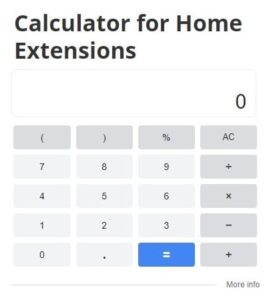
At Home Owners Association, we’re committed to helping you make smart choices for your property. Energy-efficient home improvements are a key way to reduce costs and boost your home’s value.
What are energy-efficient home improvements? They’re upgrades that minimize energy waste and maximize efficiency, leading to lower utility bills and a smaller carbon footprint.
In this post, we’ll explore the most effective energy-saving upgrades and their long-term benefits for both your wallet and the environment.
What Are Energy-Efficient Home Improvements?
Definition and Scope
Energy-efficient home improvements encompass a wide range of upgrades that reduce energy consumption and waste in residential properties. These enhancements span from simple changes (like switching to LED bulbs) to more complex projects (such as installing solar panels). The primary objective is to create a living space that consumes less energy while maintaining or improving comfort and functionality.
The Importance of Energy Efficiency
Energy-efficient improvements have a significant impact on both personal finances and the environment. The U.S. Energy Information Administration reports that in 2022, the average annual amount of electricity sold to a U.S. residential electric-utility customer was 10,791 kilowatt-hours. Implementation of energy-efficient upgrades can dramatically reduce these costs. For example, proper insulation and air sealing can lower energy bills by up to 15%.
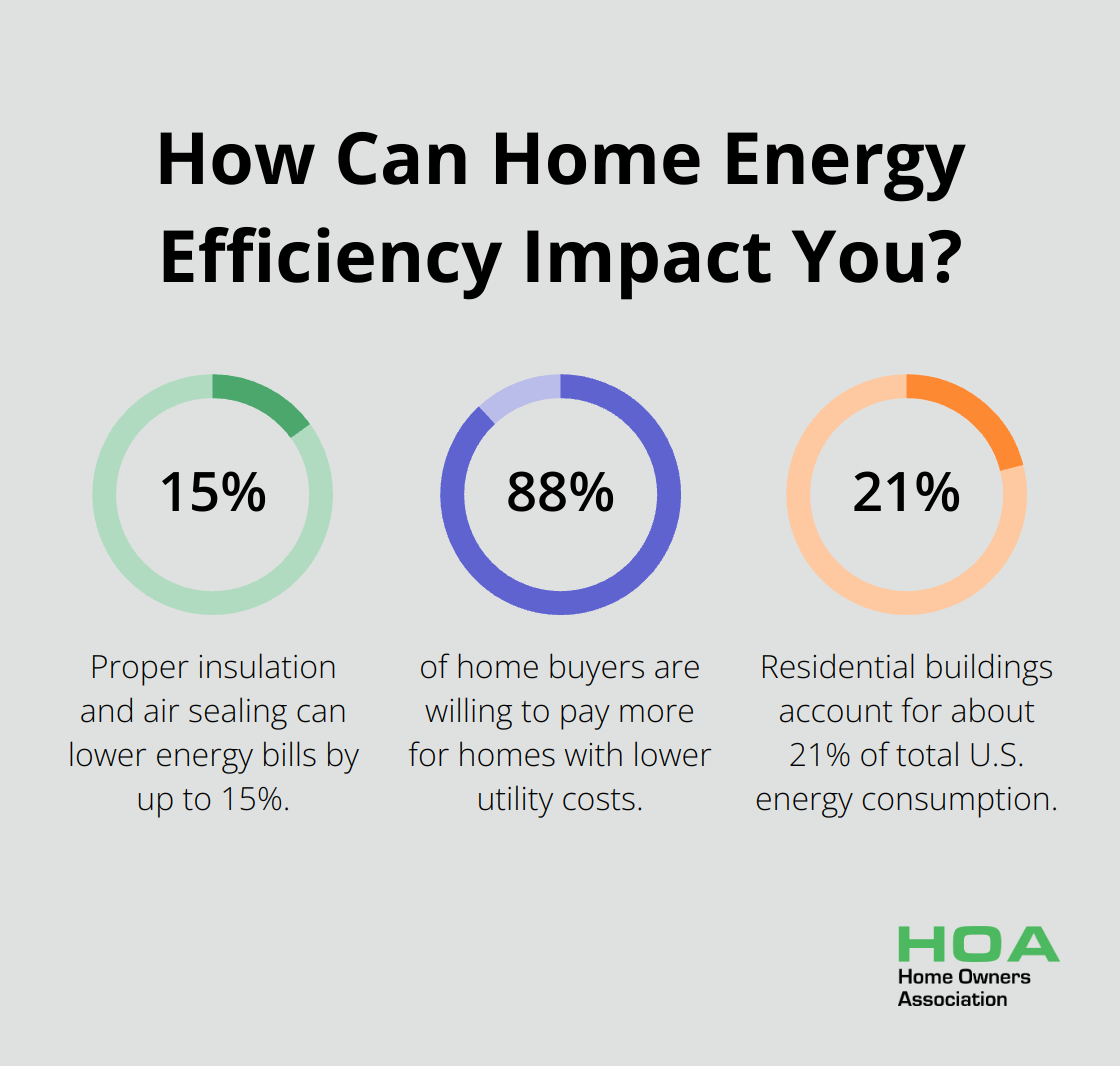
These improvements also play a vital role in reducing carbon footprints. The U.S. Environmental Protection Agency reports that in 2022, U.S. greenhouse gas emissions totaled 6,343 million metric tons of carbon dioxide equivalents. Homeowners who make their properties more energy-efficient actively contribute to the mitigation of climate change.
Long-Term Benefits for Homeowners
The advantages of energy-efficient improvements extend far beyond immediate energy savings. These upgrades can increase a home’s value substantially. A study by the National Association of Home Builders revealed that energy-efficient features rank among the top priorities for home buyers, with 88% willing to pay more for homes with lower utility costs.
Furthermore, energy-efficient homes often provide superior indoor air quality and temperature control. This improvement leads to enhanced comfort and health for occupants. Properly sealed and insulated homes reduce drafts and maintain more consistent temperatures, which can alleviate respiratory issues and create a more comfortable living environment.
Environmental Impact
From an environmental perspective, energy-efficient homes play a critical role in conservation efforts. The U.S. Energy Information Administration estimates that residential buildings account for about 21% of total U.S. energy consumption. A reduction in this figure through energy-efficient improvements can significantly decrease reliance on fossil fuels and help mitigate the effects of climate change.
The Role of Home Owners Associations
Home Owners Associations (HOAs) across Australia have witnessed firsthand how these improvements transform properties. Members often report substantial savings on energy bills and express pride in their contribution to a more sustainable future. Whether the goal is to cut costs, increase home value, or reduce environmental impact, energy-efficient improvements offer practical and effective solutions.
As we move forward, it’s essential to understand the specific upgrades that can make the most significant impact on a home’s energy efficiency. The next section will explore the top energy-efficient home improvements that homeowners should consider.
Top Energy-Efficient Home Upgrades
Energy-efficient home improvements transform Australian properties, reducing utility costs and increasing value. Let’s explore the most impactful upgrades homeowners can make.
Insulation: Your Home’s Thermal Shield
Proper insulation forms the foundation of an energy-efficient home. Heating and cooling can account for 20% to 50% of energy used in Australian homes, depending on the climate zone. Upgrading insulation significantly reduces this energy consumption.
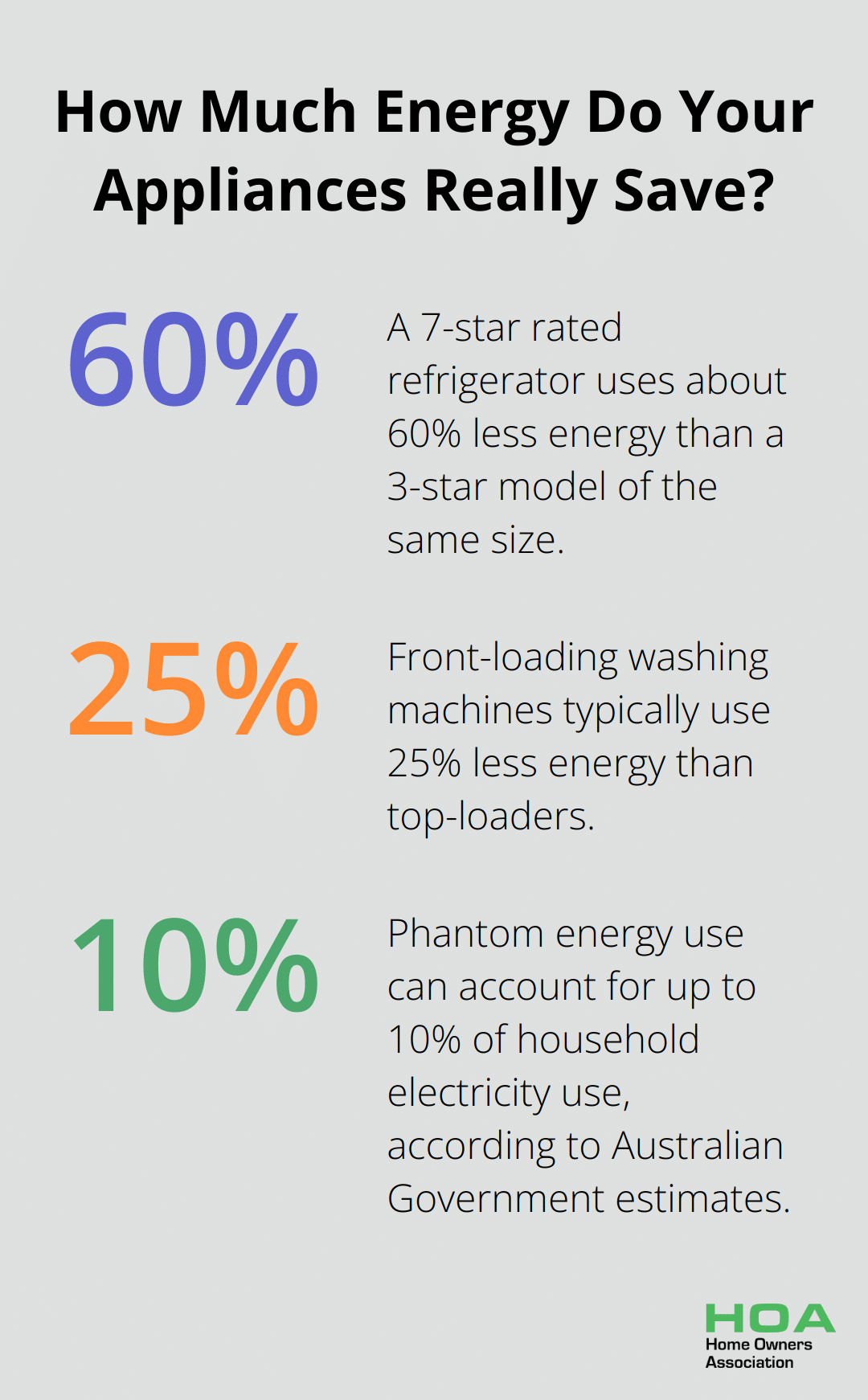
For optimal results, prioritize roof and ceiling insulation, followed by walls and floors. The type of insulation matters too. Polyester batts offer excellent thermal performance and resist moisture, making them ideal for Australian climates.
When selecting insulation, consider the R-value (which measures thermal resistance). Higher R-values indicate better insulation. Most parts of Australia recommend an R-value of 4.1 for ceilings and 2.8 for walls.
Windows and Doors: Efficiency Gatekeepers
Windows and doors can significantly impact heat gain in summer and heat loss in winter. Double-glazed windows reduce heat transfer by up to 30% compared to single-glazed options.
For doors, install weather stripping and door sweeps to prevent drafts. When replacing doors, look for those with a high energy rating. The Window Energy Rating Scheme (WERS) in Australia provides a star rating system to help choose the most efficient options.
Smart Home Technology: Advanced Energy Management
Smart home technology revolutionizes energy consumption management. Recent research has found that Australian-model-based adaptive setpoint temperatures, taking into account mixed-mode, significantly lowers energy demand.
Smart power strips detect when devices enter standby mode and cut power completely, eliminating phantom energy use (which can account for up to 10% of household electricity use, according to Australian Government estimates).
Whole-home energy monitoring systems provide real-time data on energy consumption, allowing homeowners to identify and address inefficiencies promptly. Some systems even suggest personalized energy-saving tips based on usage patterns.
Appliance Upgrades: Efficiency Overhaul
Replacing old appliances with energy-efficient models leads to substantial savings. Look for appliances with high energy star ratings (the more stars, the more energy-efficient the appliance).
A 7-star rated refrigerator uses about 60% less energy than a 3-star model of the same size. Front-loading washing machines typically use 50% less water and 25% less energy than top-loaders.
Don’t overlook smaller appliances. LED light bulbs use up to 75% less energy than traditional incandescent bulbs and last 25 times longer. Replacing just five frequently used lights with LED bulbs can save up to $75 per year on energy costs.
These energy-efficient upgrades not only save money but also increase home comfort and value while reducing environmental impact. The next section will explore the financial aspects of these improvements, including initial costs, potential savings, and available incentives.
The Real Cost of Energy-Efficient Upgrades
Energy-efficient home improvements are investments that yield returns over time. Let’s examine the costs and benefits of these upgrades to help you make informed decisions for your Australian home.
Initial Investment vs Long-Term Savings
The upfront costs of energy-efficient improvements vary significantly. LED lighting upgrades can cost as little as $100 for a whole house, while a complete solar panel system might require $15,000 to $25,000. These initial expenses often result in significant long-term savings.
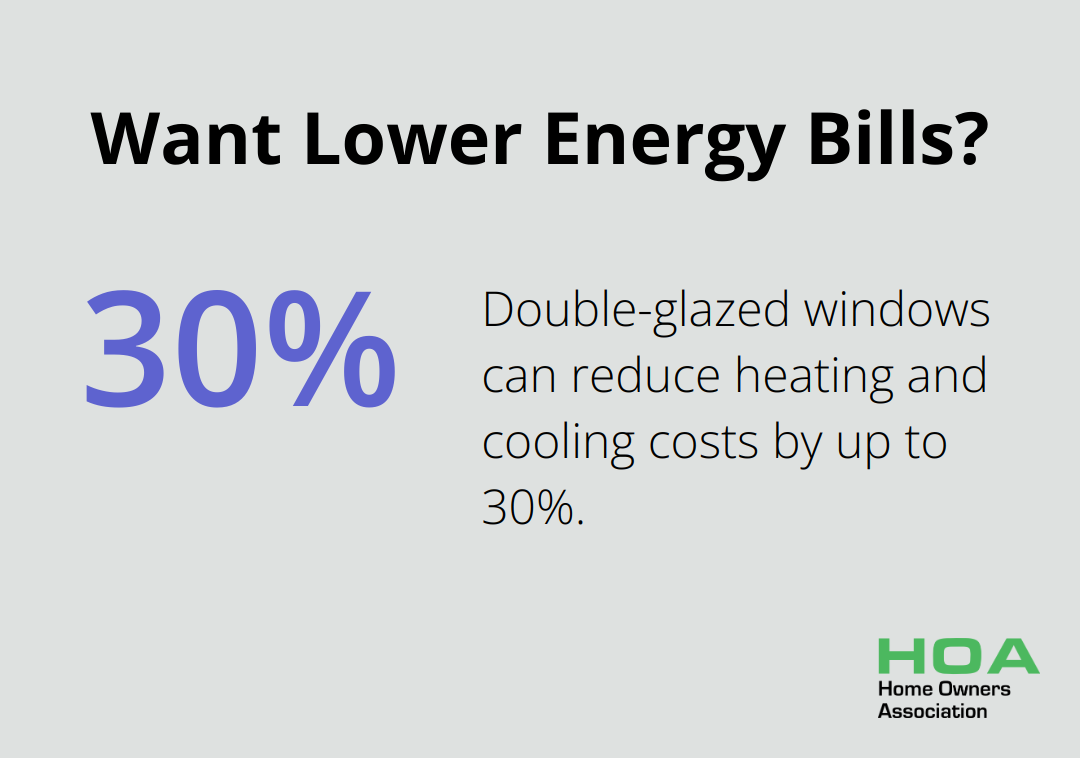
Insulation serves as a prime example. The cost to insulate an average Australian home ranges from $2,000 to $4,000. This investment can reduce energy bills by 25%. Over a decade, homeowners could save thousands of dollars (depending on energy usage and local rates).
Energy-efficient appliances typically cost 10-20% more upfront but can reduce energy bills by hundreds of dollars annually. A high-efficiency air conditioner (costing around $3,500) can save up to $300 per year on cooling costs.
Government Incentives and Rebates
The Australian government offers various incentives to promote energy-efficient home improvements. The Community Clubs Program provides rebates of up to $100,000 per club to upgrade to more energy efficient appliances and energy systems.
Many state governments provide their own rebates. Victoria’s Solar Homes Program offers rebates of up to $1,400 for solar panel systems and up to $1,000 for solar hot water systems. New South Wales has the Energy Savings Scheme, which provides financial incentives for a range of energy-saving activities.
Return on Investment Analysis
The return on investment (ROI) for energy-efficient upgrades can impress homeowners. Solar panels typically have a payback period of 3-5 years in Australia. After this point, the energy they generate becomes essentially free.
Double-glazed windows, while costly to install at around $600-$800 per square meter, can reduce heating and cooling costs by up to 30%. With average energy bills in Australia at approximately $1,600 annually, these windows could save $480 per year. This translates to a payback period of about 8-10 years, while continuing to provide savings and comfort for decades.
Smart thermostats (costing around $300-$400) can cut heating and cooling costs by 10-15%. In a typical Australian home, this could mean annual savings of $160-$240, resulting in a payback period of just 1.5-2.5 years.
Impact on Property Value
Homes with high energy efficiency ratings are increasingly sought after in the Australian real estate market. These properties often command premium prices, adding another layer of value to energy-efficient upgrades. Potential buyers recognize the long-term savings and comfort associated with these improvements, making them more willing to pay a higher price for an energy-efficient home.
Final Thoughts
Energy-efficient home improvements transform properties, reduce energy consumption, and increase comfort. These upgrades, from insulation to smart technology, offer substantial long-term savings and boost property value. What are energy-efficient home improvements? They are essential investments that lower utility bills and create more sustainable living spaces.
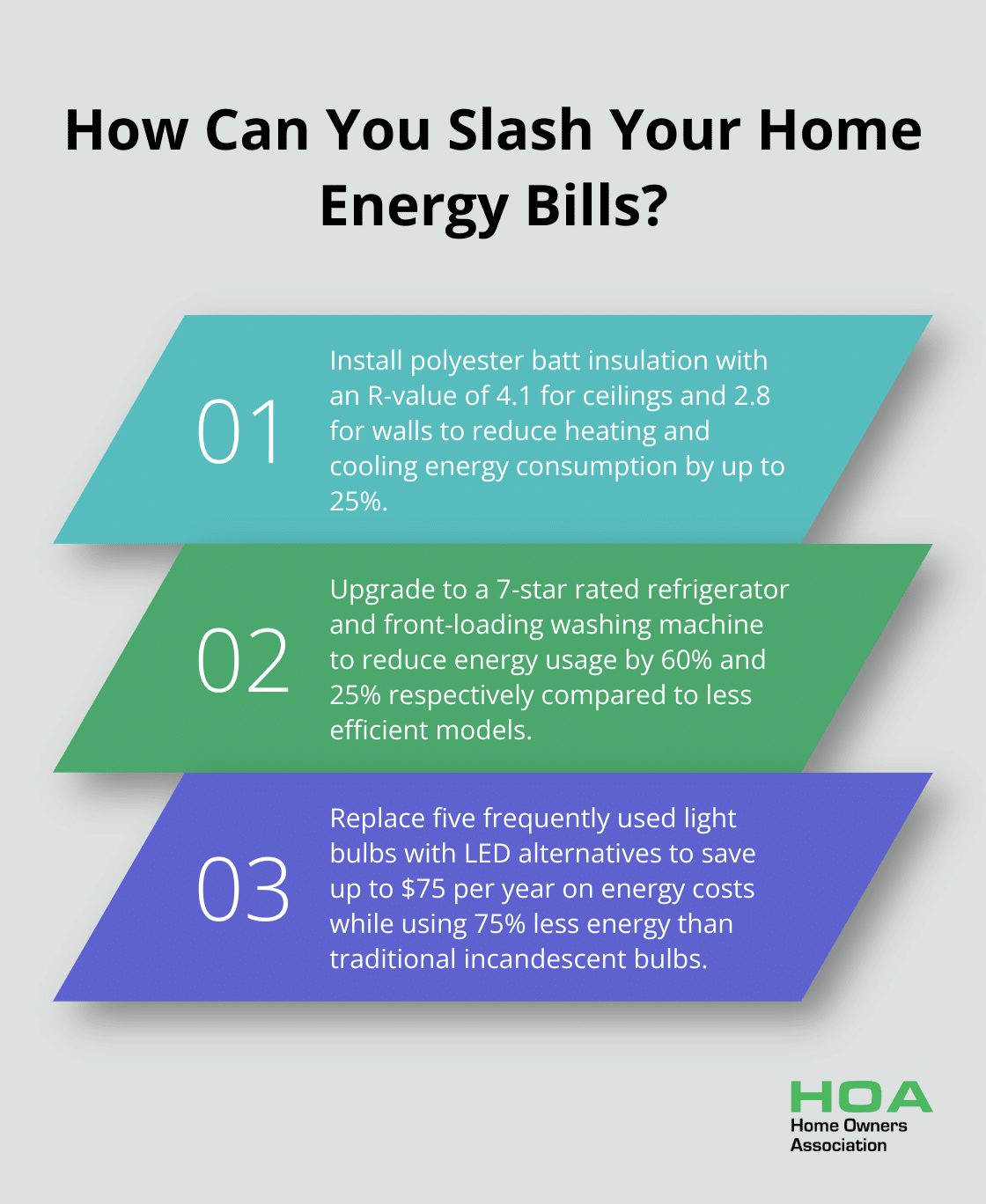
Energy efficiency in home renovations has become a necessity as energy costs rise and environmental concerns grow. These improvements reduce our carbon footprint and contribute to a more sustainable future. The initial investment may seem daunting, but the long-term benefits (including government incentives and rebates) far outweigh the costs.
We at Home Owners Association encourage Melbourne homeowners to start their journey towards a more energy-efficient home. As members, you have access to exclusive benefits, expert advice, and resources to guide you through your energy-efficient home improvement journey. The future of energy-efficient living starts at home, and that future begins now.





